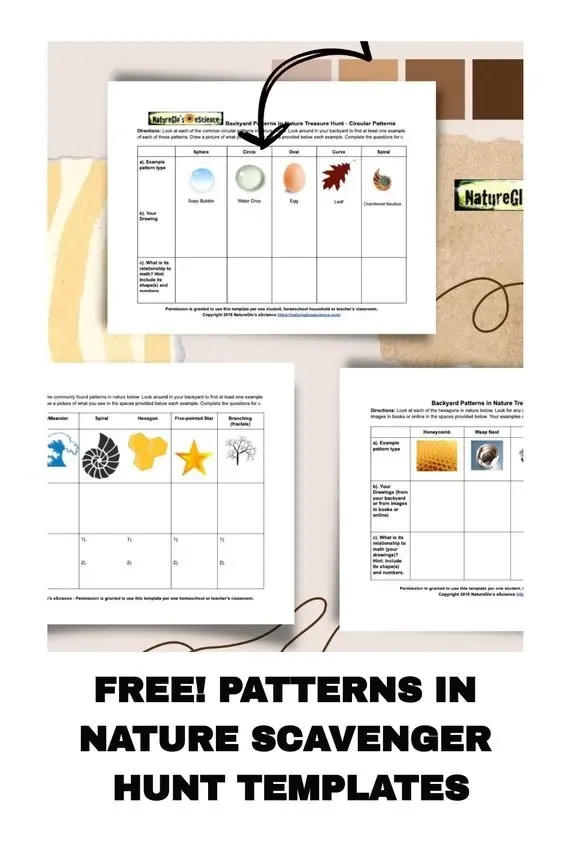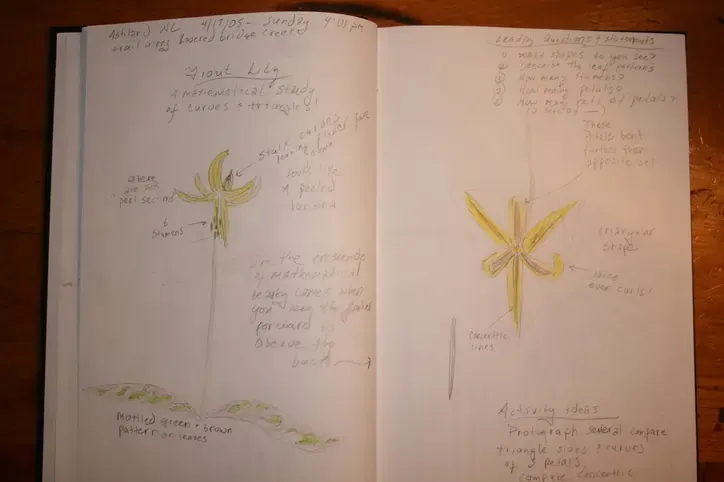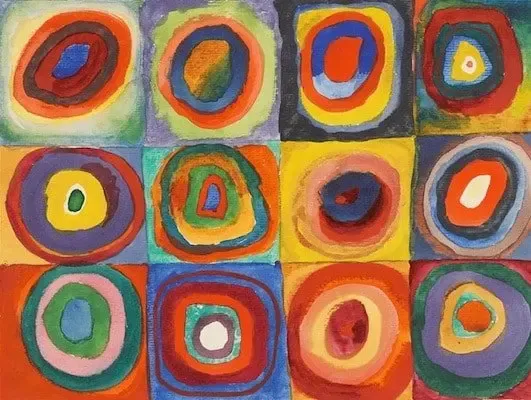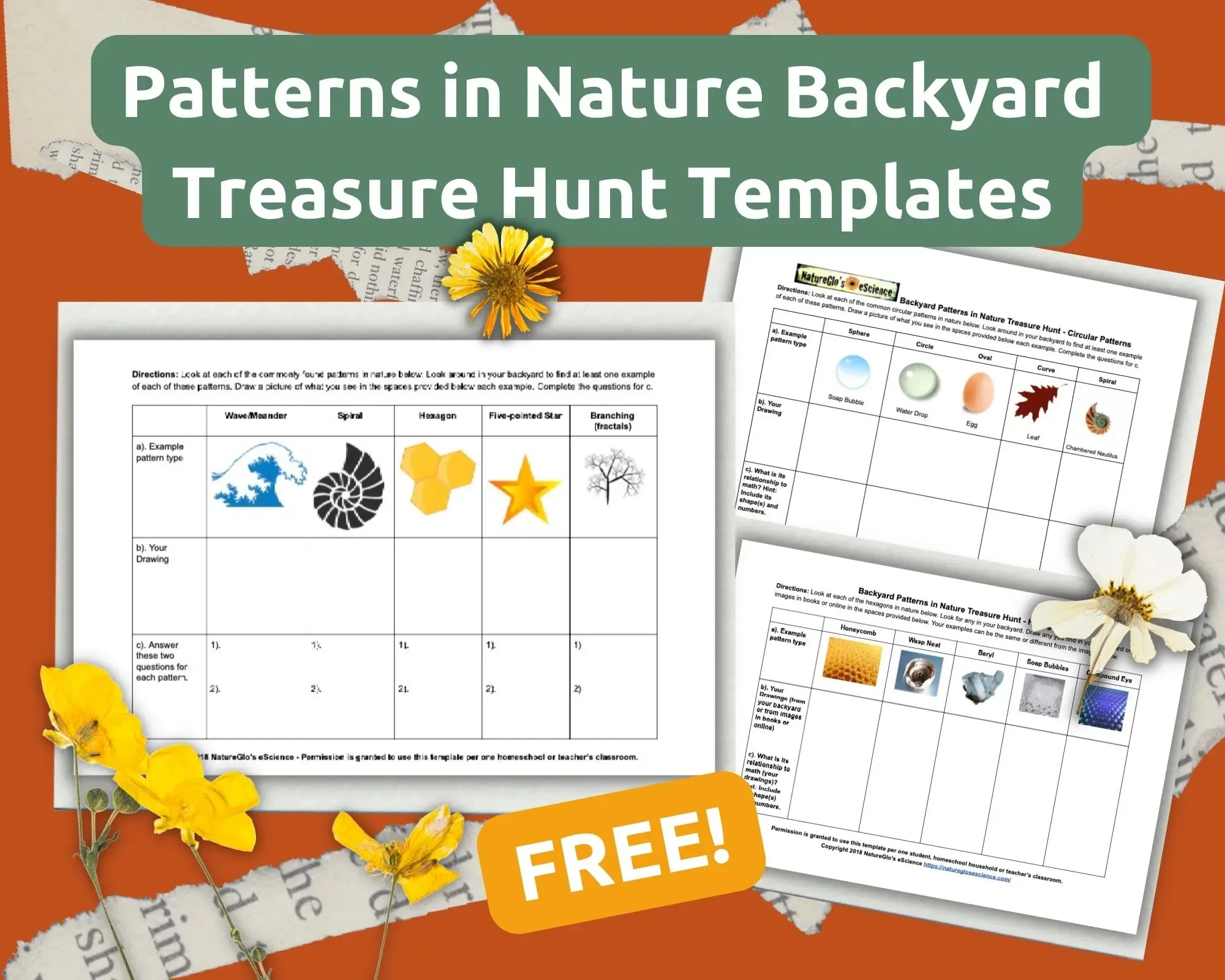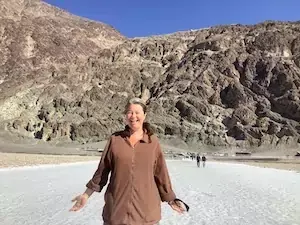How to Create a Patterns in Nature Activities Unit Study For Home or School
Creating rich and engaging math themed unit studies can be incredibly gratifying to you as a home or school educator curriculum creator and inspiring for your learners.
The wonder and beauty of studying nature's patterns, shapes and numbers is truly astonishing. So incredible are these math connections with the real world to me that I've been studying them since 2003. So great was my excitement about the connections there are with mathematics and the world around us, that from inspiration, I created NatureGlo's eScience MathArt curriculum to tie in cross-curricular connections there are with art, architecture, nature, science, history and even literature.
What about math unit studies? It's pretty rare to find unit studies centered around math. I'm privileged to make a stamp on this topic within the worldwide Web.
Have I got a GREAT activity to help you get started and on a roll with creating these fascinating unit studies.
I created some Backyard Patterns in Nature Treasure Hunt templates for download and to printout. They are great for multi-ages.
Download the Patterns in Nature Activities Templates Below.
Backyard Patterns in Nature Treasure Hunt Activity
One of the things that enthralled me the most when I first discovered maths found in nature, were the repeating patterns and shapes found everywhere! It became a treasure hunt for me looking for them. With my camera and journal in hand, I'd take off down a trail sweeping from side-to-side looking at plants, trees and animals.
I'd stop and observe a wild flower, bird or tree, take photographs, draw the specimen and mathematically describe the numbers, shapes and patterns I saw. Have a look at a real life example from my MathArt journal below.
Math Journal Showcasing Math Patterns and Numbers Found in the Trout Lily Wildflower
During my 7-year exploration of studying patterns in nature, I created these journal pages. This one of the Trout lily wildflower, I sketched at the Brandywine Creek State Park in Delaware.
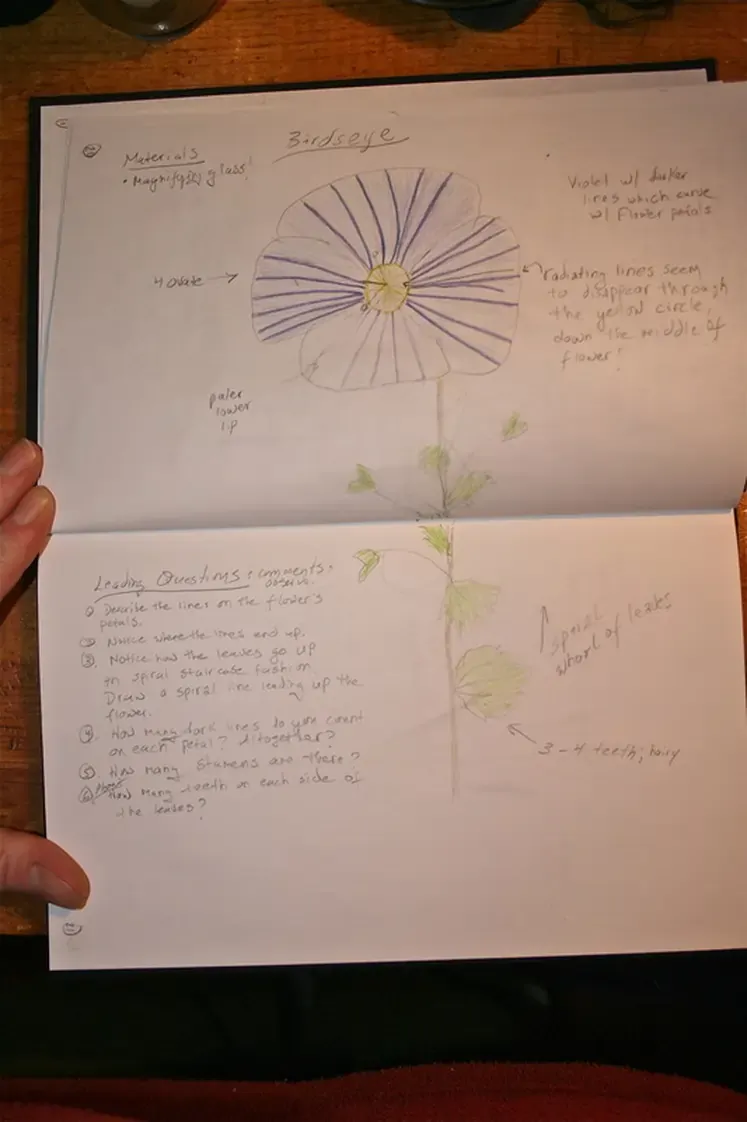
Above is another patterns in nature activities notebook page spread I did of a Birdseye wildflower found in my Elkton, MD backyard.
Be sure to Zoom in to see the details!
Looking for patterns in nature is an easy yet intriguing activity. They can be found just about everywhere you could look in your backyard. Why start in your backyard first, or wherever you are? It's for simple convenience sake. In this post, I invite you and your children to do a treasure hunt of patterns in nature found right in your own backyard together with NatureGlo's Patterns in Nature Backyard Treasure Hunt templates.
Why do I suggest parents try this activity on their own first?
You might want to try this activity alone before you bring your kiddos outdoors (during nap time?) so that you can spend that much needed alone time to really focus your mind and learn to see these magnificent patterns for yourself first. After you've done this relaxing nature-connecting activity, repeat the activity with your children at a later time.
How to Do a Treasure Hunt Looking for Nature's Circular Patterns
Materials:
DOWNLOAD HERE the Backyard Patterns in Nature Template - Circular Patterns
- Clipboard or book to place your paper on unless you're using a notebook
- Pencil or mechanical pencil with a good eraser
- Camera phone
- Optional: colored pencils
Procedure:
- Go out in your backyard with your template, writing utensil(s), and camera
- Look over the template. Notice the familiar types of patterns all around in your backyard.
- Locate and draw the same or similar types of patterns from your backyard that you see in the template examples. You can be as general or as detailed as you like with your drawings.
- Really look at and study each plant, animal, or mineral you find.
- Learn to see with "mathematical vision
- Color your drawings
How I Learned Nature's Math
Learning to look at nature's patterns, numbers with cross-curricular connections takes time. In my early 20's, while in college, I was FIRST introduced to the concept of nature's patterns in a Life Science Library hardback book entitled, Mathematics by David Bergamini.
I still marvel that I was NEVER introduced to patterns in nature in grade school or college.
Why, I wonder?
Connecting math with the natural world through patterns in nature is such a simple concept and it's all around us! David Bergamini's book, Mathematics, very unexpectedly showed me circular patterns such as spirals found in sunflower and daisy seed heads among other patterns which I'll cover in future posts.
The book, Mathematics, brings in ancient history connections such as the Parthenon being within the Golden ratio. You can read more about the Golden ratio and what it is here from my article, 7 Tips to Create Golden Ratio and Fibonacci Numbers Math Learning Centers. It wasn't until my early 30's, after my teaching career was well underway, that I was re-introduced to patterns, shapes and numbers in nature by wellness teacher and educator, Don Tolman.
Don's teaching inspired me to get outdoors on my own personal search to look for the patterns. Have a look at some circular patterns photos I took during my 7-year patterns in nature journey.
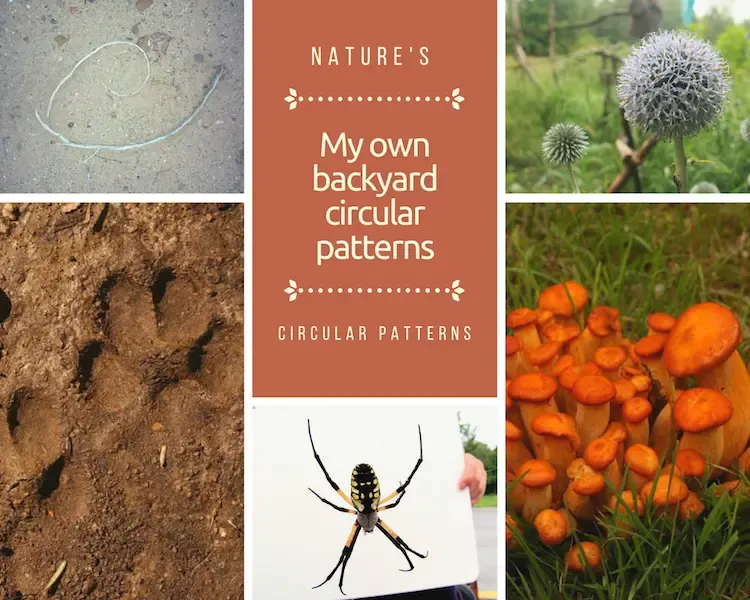
From left to right, top to bottom: a spiral created from two curved plant stems, tracks from a mountain lion - look how cute the circular paddy paws are! Was it lurking in the bushes near me?
Look at the bottom, middle image of the argiope, a type of orb weaver spider. Notice the ovoid abdomen, quite prominent. My friend Julie was holding up a white foam board behind it so that we could see the spider! Upper right image: This is a Globe thistle which exhibits what? Spheres!
Last but not least, bottom right image: bright orange mushrooms showcasing amazing circular caps.
I strongly suggest teachers and homeschool parents get a lot of dirt time in both by themselves and with their learners. When I say dirt time, I mean, getting outdoors in nature. Starting right in your own backyard looking for circular and other patterns found in nature, will train your eyes and mind to learn to see patterns and make these beautiful real world math connections.
You can go from your backyard looking for these patterns, to finding them at your local state parks and national forests, and, of course, in your own home. Your backyard no matter how urban or rural, will offer you and your children great training in learning to find patterns in nature and see their connections in other subjects.
What Cross-curricular Connections Can you Make with Nature's Patterns?
Bringing in your other academic subjects allows for very creative connections and thinking. I don't know what curriculum you use (or perhaps none at all), but, here are a few helpful guidelines to bring your own backyard math into your current curriculum.
- Think about what you're learning in each subject.
- Look at each pattern image example from the templates, your own drawings and descriptions.
- How can you tie these patterns in with your history, literature, writing, math, and art?
- Literature & Writing - You can create writing activities around each type of circular pattern. Students can come up with stories and poetry about what they see in nature.
- History - The Flower of Life is a famous symbol made up of circles that has been mysteriously found across cultures and religions.
- Find out what countries, temples and cultures where the Flower of Life has been found.
- Art - One of nature's most common patterns is concentric rings, or, rings found within rings sharing the same central point. There are some beautiful online art projects that you can do recreating Kandinsky's famous concentric circles painting. Check out short YouTube video of the project beneath Kandinsky's original 1913 painting.Check out more information about Kandinsky here. Check out his concentric circles painting here.
What about High School Math?
Learning patterns in nature is something that can and should be done at any age. Being that most of us have not studied patterns in nature in mainstream or from boxed curriculum, there's no time like the present, even in high school, to learn to find, describe, write about and make cross-curricular connections while learning about patterns in nature. The above art project, for example can be done as early as kindergarten and as old as a human being can be.
High school students can bring in studies such as high school geometry, algebra, and calculus all the while creating art projects using those maths and incorporating nature's patterns.
Below is a fun video tutorial of a great pi day project (appropriate for upper elementary, middle and high school students), but you can still do it on any day. He he!
As a refresher, pi is the ratio of a circle's circumference to its diameter. Pi is always the same number no matter what size the circle is. Dividing any circle's circumference by its diameter will always yield the same exact number: 3.1415…or pi.
As a precursor to this art project, I would suggest taking a photo of your own town or city's skyline at sunset and make circular connections between the skyline and the buildings you see. Usually, the circular patterns will be found in the sky's clouds
Download the Patterns in Nature Activities Templates Below.
Conclusion for Patterns in Nature Activities
Opening the door for out-of-the-curriculum-box math learning through patterns in nature activities outdoor exploration is a great way to introduce math to very young children and inspire older children who have or are going through the typical math education.
Grab and download my free Patterns in Nature Scavenger Hunt Templates to help you get started with exploring nature's patterns.
Why Look for Math in Nature?
It's no big secret that modern day society is suffering from nature deficit disorder. As a race, almost globally, we are disconnected and disassociated from the natural world.
What once was our direct support for all of our needs when our ancestors were hunter gatherers, to going to the grocery and box stores and living in cheaply made houses. The patterns in nature backyard treasure hunt can help you and your learners step out from behind the screens, out of the house, and interacting and communing again with nature.
Educators can help remedy this nature deficit disorder by presenting a patterns in nature treasure hunt to learners thus helping youth reconnect with nature as well as seeing beautiful real world math connections all around them.
I hope that your family or class enjoys these cross-curricular connections starring circular patterns in nature!
Talk soon!
NatureGlo

